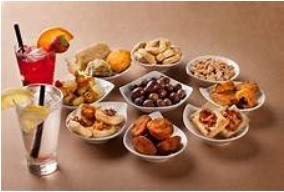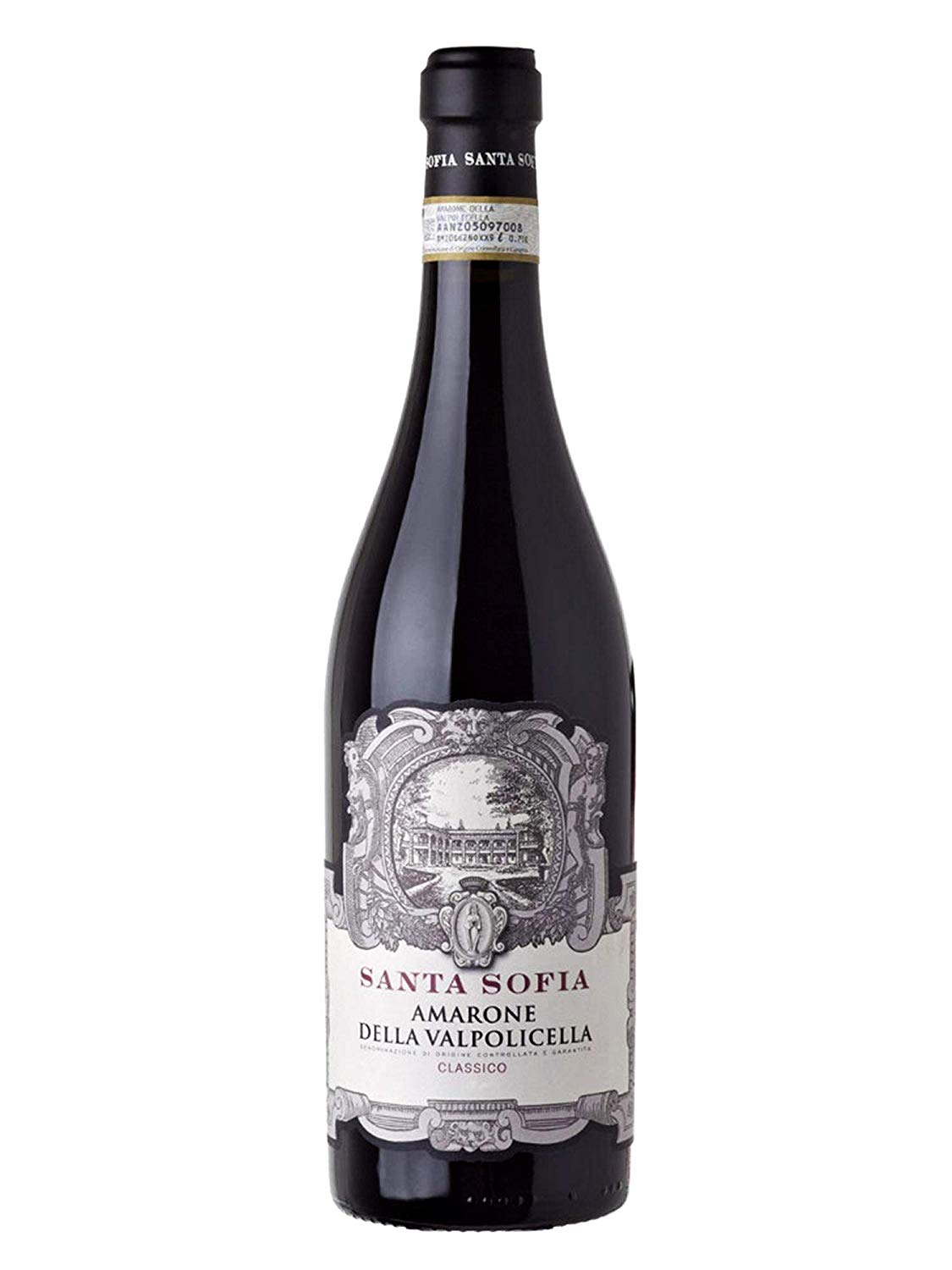>> Prova i Vini suggeriti da Club del Vino e facci sapere cosa ne pensi! <<
Foodservice (US English) or Catering Industry (British English) defines those businesses, institutions, and companies responsible for any meal prepared outside the home.
This industry includes restaurants, school and hospital refectory, cafeterias, catering operations, and many other formats.
The companies that supply foodservice operators are called foodservice distributors. Foodservice distributors sell goods like small wares (kitchen utensils) and foods.
Some companies manufacture products in both consumer and foodservice versions.
The consumer version usually comes in individual-sized packages with elaborate label design for retail sale. The foodservice version is packaged in a much larger industrial size and often lacks the colorful label designs of the consumer version.
History of the Aperitif : The origins
Aperitif are special drinks that have the function of preparing the body for the meal.
The Aperitif is a very important moment, in everyday life, a moment of aggregation with people, it is as if it were a ritual, a very important thing. A moment of relaxation and recreation, to spend with friends and of which, now, we can’t do without.
We look forward to it in the late afternoon, generally between 18 and 20(pm) and it almost becomes a ritual on Fridays, once you leave work.
But, have you ever wondered how this inevitable appointment was born? Well, I do, that’s why today I want to tell you something about the history of the Aperitif.
The etymology of the term leaves no doubt: it is defined as an Aperitif, from the Latin aperitivus (which opens), a drink capable of stimulating and, therefore, “opening” the sensation of hunger. What does this bizarre meaning come from, you wonder?
Here you are satisfied: in the V. century a.c. the Greek doctor Hippocrates discovered that to alleviate his patients’ lack of appetite, it was enough to give them a drink, with a rather bitter taste, based on white wine, Dittany flowers, Absinthe and Rue.
This concoction, which later took the name of Vinum Hippocratum, was then handed down from century to century, until reaching the skilled hands of medieval herbalists.
And it was these last ones that came to a surprising discovery: to stimulate the sense of hunger were not those particular ingredients, but the bitter taste that they released.
And it is no coincidence that, even today, the main drinks we like to drink during aperitif time are mainly bitters, that is characterized by a classic bitter aftertaste.
But the History of the Aperitif, as we know it today, began in Turin in 1876, where in a small liquor shop, Antonio Benedetto Carpano gave life to that, which later became the important Aperitif : Vermouth, a delicious wine flavored with china, which would soon conquer the then King of Italy Vittorio Emanuele II.
Indeed, it was the latter, in fact, who named Vermouth with China Carpano (later renamed Punt and Mes, for that extra “point and half” of it), the Court Official Appetizer.
And from that day, almost 140 years ago, the History of the Aperitif took its course, invading the bars and cafés of the Savoy city, discovering new flavors, to the point of depopulating the locals in cities throughout Italy with new cocktails and habits. Many Cocktails belong to moments of Our History Example : Negroni, Spritz.
The other aperitif liqueurs: Amari, Martini, Campari, Aperol
If in the space of a few decades Antonio Benedetto Carpano had had such a success with his vermouth that he had a shop open 24 hours, others also followed the trend of aperitif liqueurs.
For example, in 1815, in Milan, the first non-wine-based aperitif was developed, namely Amaro Ramazzotti, which is made with a combination of about 33 herbs. Its inventor, Ausano Ramazzotti, was actually a pharmacist (remember the story of Hippocrates?).
The real boom of the bitterness arrives around the mid-1800s, when Mr. Ramazzotti opened a bar near the Teatro la Scala, where his bitterness became the most popular aperitif in Milan.
Always in the same decades in Piedmont another famous name emerges that we are still used to associate with aperitifs: these are the producers of wines, Martini & Rossi, who invent the white Martini (also called white vermouth).
It is a very particular vermouth made with Muscat wine and enriched with a series of herbs left to macerate. Soon the “dry” version arrives, with a stronger taste and more loved by the male audience. Still in the same years (we are now in the Unification of Italy) comes another alternative to vermouth, which is still very famous today.
This is Campari, created by Gaspare Campari, who experimented with innovative liquors in his famous coffee shop in Novara.
Still based on herbs (the original recipe is secret), it is characterized by its bright red color, and is called “Bitter”, a word that in German and English always means bitter.
Davide Campari is the son of Gaspare Campari, the creator of the famous beverage In 1865 the family had moved from Novara, where he traded in artisan-made liqueurs and drinks, in Milan, starting here the production of «Bitter», Davide who in 1915 opened the famous Caffè Camparino located in the “Galleria in Milano”.
Today the brand is famous all over the world, and is one of the symbols of the Italian lifestyle. It is also used to make many famous cocktails.
Killer in red and it’s the new and suggestive Campari cocktail. Unveiled to journalists and bartenders during the presentation of the Campari Red Diaries Campaign, the cocktail also gives its name to the short film signed by the director Paolo Sorrentino and interpreted by Clive Owen, two giants of cinema who said they were excited to work with the Italian brand If you’re wondering how to prepare Campari Killer in red here’s the recipe.
INGREDIENTS
- 2.25 cl of Campari, • 2.25 cl of White Vermouth
- 1.5 cl of Grand Marnier,
- 2.25 cl of Chamomile Gin,
- a drop of rose essence.
The aperitif of now: happy hour
If in the bars of the village or neighborhood you still come across people who make the “old-fashioned” aperitif, which consists of a vermouth to drink quickly before going to lunch, in the last few decades the aperitif has become very popular “happy hour” version which is something decidedly different.
This type of aperitif began to take off from Milan in the 1980 and 1990, taking up the concept of the American happy hour, to then spread throughout Italy. With happy hour the concept of aperitif changes again.
With happy hour the concept of aperitif changes once again: ideally it should take place between leaving the office and dinner, but often the aperitif time slot expands and goes to supplant dinner. Also for this reason the habit of happy hour can be at least partly compared to the tradition of Spanish tapas, which however provides a more itinerant mode, from bar to bar.
The list of aperitif drinks is extended by including several cocktails, among which one of the most loved is the ever-very Italian Spritz (evolution of the “Spritz”, typical of the north-east).
In addition to cocktails, light beers are also usually consumed, and some remain faithful to various dry or Campari martinis.
Alongside the drinks, food is becoming increasingly important, so much so that today many restaurants offer the so-called “aperitifdinner” (a term hated by some, but which makes the concept well). A rich buffet of appetizers is also available for customers, even if they are quite substantial, which can easily replace dinner for a modest cost.
To date the aperitif is a very popular and widespread social context in Italy: less demanding (even economically) than a dinner, it allows us to relax and be in company, see friends and why not – hanging out with that suitor with whom we still don’t we feel like going out to dinner.
Let’s look at examples of appetizers for aperitifs
here it is very important to have the imagination to prepare appetizers
Campari with Seltz (How to serve in Milan)
-8 cl Bitter Campari (Il Campari va tenuto nel frizer)
-Selz
In a chilled glass put the Bitter Campari and add Seltz
Negroni
-3 cl Gin
-3 cl Martini Rosso
-3 cl Bitter Campari
-1 Orange Slice
Pour directly into the Old Fashioned glass filled with crystalline ice all the ingredients. Add the orange slice and mix gently.
Negrosky
-3 cl Wodka
-3 cl Martini Rosso
-3 cl Bitter Campari
-1 Orange Slice
Pour directly into the Old Fashioned glass filled with crystalline ice all the ingredients. Add the orange slice and mix gently.
Negroni Sbagliato
-4 cl Bitter Campari
-4 cl Martini Rosso
Prosecco
-1 Orange Slice
Pour directly into the Highball glass filled with crystalline ice “Bitter Campari and Martini Rosso” and fill with prosecco.
Aperol Spritz
-6 cl Aperol
-4 cl Prosecco
-Selz
-1 Orange slice
Pour directly into the Old Fashioned glass filled with crystalline ice all the ingredients: “Aperol e Prosecco and Selz. Add the orange slice.
Spritz (Venice Recipe)
-4 cl Bitter Campari
-4 cl Prosecco
-4 cl Mineral water
– 1 Orange slice
Pour directly into the Old Fashioned glass filled with crystalline ice all the ingredients: “Bitter Campari – Prosecco and Miner Water. Add the orange slice.
Manhattan
-5 cl Rye Whiskey
-3 cl Martini Rosso
Fill in the “mixing glass” of flavored ice with a few drops of Angostura Bitter, add the other 2 ingredients and mix gently and serve by filtering in a cold cocktail cup. Decorate with red cherry.
By now even the Italians have learned to appreciate the Spanish typicality, but with the names we still make confusion: here is a guide to clear your mind
Street food and Aperitifs are not just Italian Culinary traditions. Of course, “Italians do it better” as they say, but everyone knows about tapas, a specialty that we generically refer to Spain and its typical appetizers. But what are the tapas really and how do they differ from pinchos, montaditos and bocadillos? Here is a dutiful clarification journey into the world of Spanish street food.
The tapas
Tapas is the generic name used to define the small snacks served in Spanish bars, of the appetizers that accompany the drink.
The term originates in Andalusia in the nineteenth century and refers to the custom of covering (tapar in Spanish) the glass of wine or sherry in inns with a piece of bread or ham to prevent insects or dirt from entering. Popular tradition cleared one fine day by King Alfonso XIII (1886 – 1941) who on his way to Cadiz stopped at a tavern to rest.
A gust of wind risked filling his wine glass with sand, and then the waiter promptly did what the patrons had always done: a slice of ham on the glass and off.
Today they are mini concentrates of Mediterranean cuisine with ham, cheese and olives but also octopus and fried calamari, or even tortilla de patatas: young Spaniards especially on weekends love ir de tapas or make tapeo, or turn from local to local tasting from time to time different tapas.
The pinchos
Always small portions of food, but don’t tell the fierce Basques: pinchos compared to tapas are something else.
Typical of Northern Spain (Cantabria, La Rioja, Basque Country, Navarra, Castile and León), the pinchos (or pintxos) are appetizers, canapés, skewers characterized by the presence of a toothpick that “pincha” together the various ingredients.
In some bars, it is still the custom to charge one’s own bill based on the number of toothpicks left on the plate at the end of the aperitif. Nowadays, however, the toothpick is not always found, but what remains the most characteristic feature of the pinchos remains, namely their accuracy: preparing a pincho is a real art, a miniature recipe that must also amaze for its aesthetic perfection .
Montaditos and bocadillos
A “tapa that evolves” is the montadito, which from a simple canapé (of the “mounted” food, placed on a slice of bread) has become a small sandwich, usually round.
A morsel with hamburgers, hams, omelettes, mushrooms, cheeses, various sauces that when “grows” turns into a bocadillo – or a stuffed sandwich – also a must for Spanish aperitifs. Impossible, if you pass by parts of Madrid, do not taste the bocadillo with fried calamares.
The cichéti, Venetian tapas
We said that “the Italians do it better”, even the tapas. We don’t know better, but first of all, given that the tradition of the cichéti exists in Venice from before that of the Spanish tapas.
The dialectal of “cicchetto” (from the Latin ciccus, “small quantity”) to indicate canapés and appetizers mainly based on fish served in the traditional taverns called bacari: creamed codfish croutons, marinated anchovies, stewed octopus but also fried specialties such as sardines in saor.
And to the custom of the ir de tapas the Venetians respond in dialect with their going to cicheti. But whether we call pinchos, montaditos, bocadillos or cicheti, to overcome every barrier and every parochialism, to unite the peoples of tasters there is only one great pleasure: eating with your hands.
Wines
Knowing and appreciating wines is a wonderful thing but the first thing to learn is “what is wine”.
Wine is the product of alcoholic fermentation, in the presence or absence of pomace, which is operated by yeasts (present on the grape’s skin).
The juice contained in the grape is transformed from a sugary liquid to an alcoholic liquid through chemical reactions where the mild transform the sugars into alcohol, seeing a person who tilts the glass twirls it and tastes the wine and does not know what wine is understood. which is absurd.
The wine is a new conception of aperitif
Characteristics of a wine for Aperitif
The wine to be proposed as an aperitif can be white, red, still or sparkling. The important thing is that it is not too structured to make it heavy to drink.
The sparkling wine is very pleasant as it contributes to the cleaning of the taste buds, waiting for the next bite. White in general is suitable in summer in seaside resorts. Its fruity and floral scents enliven the palate, provided it is served at the right temperature.
The white must be kept in the fridge even at a slightly lower temperature, taking into account that the heat will tend to make it rise.
Light red wines are more suitable in autumn and winter in the city. The air becomes fresher and the red wine gives a pleasant sensation of warmth.
Prosecco, the traditional aperitif wine
Prosecco is an excellent aperitif wine. Its light structure and bubbles make it suitable for many of the delicacies offered by wine- bars.
Very often, however, there is a bit of confusion about it. It is called Prosecco any sparkling wine proposed as an aperitif. In reality, Prosecco refers exclusively to the wine produced in the Veneto region and which is marketed under the names proper to the territory to which it belongs.
The most suitable version is the extra-dry sparkling wine in which the residual sugar is greater and is therefore less angular given the simplicity of preparation of the appetizers. Prosecco Spago, a sparkling wine is not ideal, as the bubbles are coarser and adapts well to a more complex preparation dish. In Veneto, Prosecco still goes well with a few snacks as a pleasant break.
Aperitif with white wine, fresh intense emotions
In summer, in seaside resorts, still white wine is very popular as an aperitif. The wine- bars offer combinations that recall the seasonal vegetables, the sea and other typical summer products.
The white wine for aperitif must be fresh, fruity and young. Fresh, understood as accompanied by a good acidity that invigorates the palate. An octopus or cold pasta salad, fresh cheeses, canapés with tuna sauce and battered vegetables can be the right match.
Red wine for Aperitif
The variety of wine as an aperitif stretches to infinity. The watchword is certainly light and fruity, with alcohol content.
If you like sparkling you can opt for a Lambrusco or Bonarda from Oltrepò Pavese. For those who prefer still red wine, Bardolino, Merlot, Montelpulciano and a Sangiovese di Romagna are some examples of wines that could be pleasant as an aperitif.
Novello, pleasant wine for Autumn Aperitif
The Novello, in recent years, (in Italy) has become the true protagonist of the autumn in food and wine.
The end of October is expected to uncork this light and fruity wine. Obviously it should not be confused with new wine.
It has a different vinification or wine making than the traditionally understood wine. However, the idea of tasting this novelty of the period fascinates young and old. Its light structure makes it easy to combine with cured meats and medium-aged cheeses.
With chestnuts it represents a pleasant interlude also in the afternoon. The fruity aromas and low alcohol make it possible to make it a typical autumnal aperitif, especially in the city.
The best Aperitif wines
The Aperitif (or “happy-hour”) is not just a moment of chatter and relaxation after work that precedes dinner, but it is a sort of “quasi-meal” that involves more and more wine lovers. Among the best aperitif wines we find tantalizing sparkling wines, such as the timeless Prosecco or Franciacorta and Trento doc for the most chic.
For lovers of fresh fruity or floral white wines, the Gewürztraminer reigns supreme, followed by the international Chardonnay and Sauvignon, from the native Sicilian vines such as Grillo or Insolia and more mineral wines like the Greco di Tufo and Falanghina.
If you are a big supporter of red wine even at the aperitif, but without weighing yourself down too much, we suggest light and easy to drink red wines, such as Sangiovese, Barbera, Lagrein, Pinot Nero, Cirò Rosso. If you are struggling with a “meditative” aperitif to chase away stress and thoughts, you can also uncork a bottle of Amarone della Valpolicella, Brunello di Montalcino or Barolo, but remember that they are more complex wines that need more time to open well to the nose and to taste and it is advisable to combine them with hearty dishes.
In indecision, he opts for a rosé wine: an excellent solution to bring together people who love white and red wines at the same table.
The tastes for aperitif wine, in Italy, tend to vary greatly depending on the area in which we find ourselves.
In southern Italy the choice of wine often falls on young wines with aromas of hay and very dry, especially if the aperitif is based on fish.
In central Italy, instead, to accompany the Tuscan, Lazio and Emilian aperitif, the choice will fall on a harmonious and velvety red wine.
In the north, the selection is no less vast, although, more than the rest of Italy, it is almost always White who is the master. In Piedmont the most quoted is a delicate, fresh wine with a herbaceous scent, while a white wine with a rich and fruity flavor is preferred by the Friulians.
Due to their peculiarity of being wines with less invasive aromas, the choice for the aperitif in Veneto falls on the low alcohol content Soave, Bardolino, Lugana and Custoza.
Our Peninsula offers a selection of varied and always delicious wines, but listing them all would be impossible. Just like every person has his taste for choosing the right wine for an aperitif, so every region, or place, has its offer.
Like the selection of Domìni Veneti wines. That from the Venetian land of Valpolicella, arrives on the tables of lovers from all over Italy.
Even for Domìni Veneti, in fact, the aperitif is an important moment, and for this reason we decided to give life to the Aperitif Time Collection, in which we find the Lugana DOC and the Raudii Garganega Chardonnay IGT.
Lugana DOC is a dry wine, particularly suitable for an aperitif based on fish.
Color pale yellow, the aroma is mostly floral with a hint of almonds, that taste is fresh and citrusy. It is a classic wine, ideal for an important occasion and with all types of light meals.
Lugana is a white wine suitable for accompanying tasty and refined recipes such as, for example, Sole and raw ham rolls for an aperitif or salmon-based first courses, which do not alter the taste of this wine, but rather enhance it.
The Raudii Garganega Chardonnay IGT is instead a harmonious and fruity wine. If you opt for a vegetable and fish based aperitif, this white with a finely bitter aftertaste is for you.
An advice? Try pairing Raudii with a risotto with taleggio cheese, pears and walnuts, or asparagus, spinach and shrimp cream. Their strong flavor will marry perfectly with the scents of this white wine.
The presence of wine at the table, particularly in countries where the wine culture has ancient roots, such as Italy, France and Spain, is a characteristic that for centuries accompanies man’s meals, he has always had a fundamental importance and scrupulous attention.
Wherever wine was present it was invariably attempted to establish the best match with food, in the past, at the service of nobles, real experts were employed who had precisely the “delicate” task of cheering and delighting the palates of their masters by offering the wines more suitable, and better, with their meals.
Even in the less affluent classes an attempt was made to do more or less the same thing, however the scarce availability of both economic and practical means did not allow for a vast choice of wines to be paired with meals, therefore we were satisfied with of what the place had to offer, both in the glass and in the dish, trying, as far as possible, to adapt one and the other so that they could be happily matched.
Today things have changed considerably, the progress of the markets and of the means of transport allow us to be able to buy and appreciate products, and therefore wines, coming from places also very distant from the one in which we live: today it is quite common to find an Australian wine or New Zealand in Italy or France, for example.
This new opportunity has allowed us to explore new horizons also in the field of food and wine as, having a greater possibility of choice in wines, it makes the combination of food and wine more flexible and more versatile.
Being the topic of enogastronomical matching rather vast and complex, I will treat it soon.
>> Prova i Vini suggeriti da Club del Vino e facci sapere cosa ne pensi! <<







Wow beautiful and detailed explanation, I am now going to drink an aperitif before dinner.
Bravo Augusto . Lovely story about it.
An articulate blog having interesting piece of information about aperitif, wines and cocktails. Thank you for sharing.
Very good information and recipes…👍🏻
Well explained Augusto ..the different regions with their wines makes it sound very appetizing..cheers
Very interesting Augusto. I enjoyed learning the history of the various aperitifs. Thank you